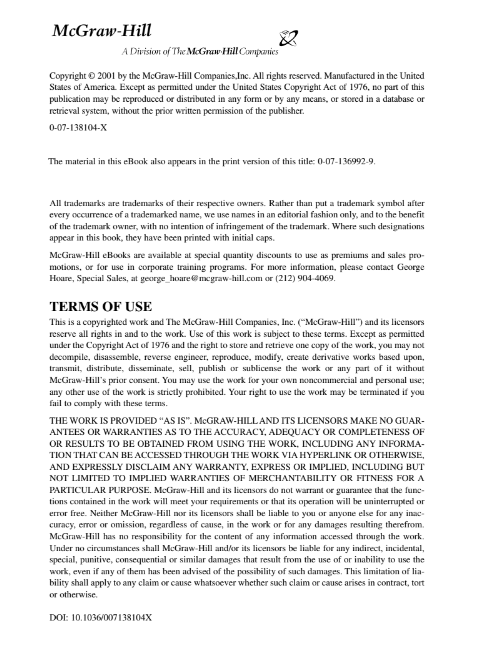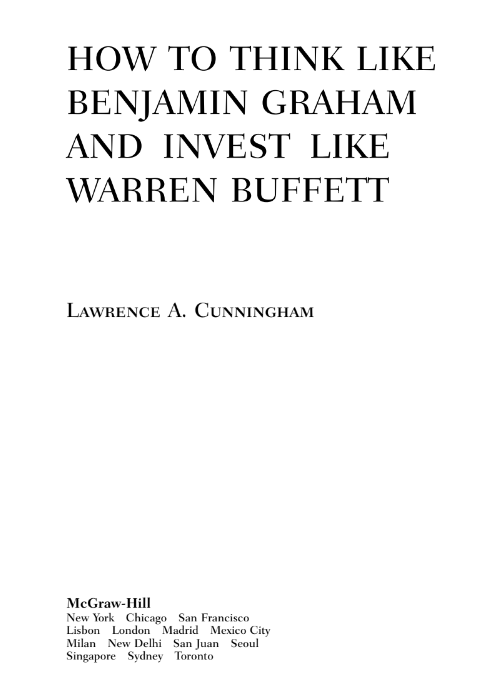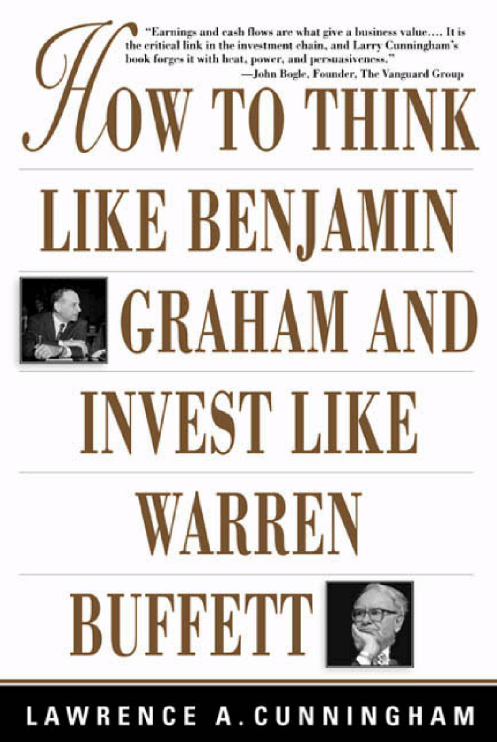


The main ideas in this book trace their intellectual lineage to Benjamin Graham, whom I never knew but must thank posthumously, and Warren Buffett, whom I have the great fortune to know and from whose writings, talks, and conversations I have gained knowledge and insight. Neither of these men, of course, has any responsibility for this book’s content and no doubt would disagree with some of what it says, though it is written as a narrative interpretation of principles they developed, to which it tries to be faithful. Mr. Buffett deserves my continuing thanks for permitting me to prepare a collection of his letters to the shareholders of Berkshire Hathaway, *The Essays of Warren Buffett: Lessons for Corporate America*, and for participating along with Berkshire Vice-Chairman Charles Munger in a symposium I organized to analyze it.
Thanks also to the readers of that collection of wonderful writings for encouraging me to write the present book, especially the courageous college and business school professors who use that book in their courses and their many students who tell me how valuable it is. Other fans of that book who encouraged me to write this one include my friends at Morgan Stanley Dean Witter, led by David Darst and John Snyder; Chris Davis and KimMarie Zamot at Davis Selected Advisers; the team at Edward D. Jones; and supporters too numerous to mention at other firms who appreciate the business analysis way of investing.
My personal and institutional ability to span these and other subjects has been greatly aided by Samuel and Ronnie Heyman, both nonpracticing lawyers and astoundingly talented businesspeople, investors, and philanthropists. They generously endowed the Samuel and Ronnie Heyman Center on Corporate Governance at Cardozo, a multifaceted program I direct that explores this range of disciplines in teaching, research, and policy review. My own teachers also deserve my thanks, particularly Elliott Weiss, now professor at the University of Arizona College of Law, who long ago drew my attention to Graham and Buffett’s ideas and who generously shares his wealth of knowledge.
For allowing me to use in modified form some materials from a textbook we worked on together. I also thank Professor Jeffrey D. Bauman of Georgetown University Law Center, and West Group, that book’s publisher. Thanks also to West Group for allowing me to use in modified form some materials from another textbook I wrote, *Introductory Accounting and Finance for Lawyers*, which is not for lawyers only. Many thanks to the whole team at McGraw-Hill for their confidence, enthusiasm, and guidance, particularly Kelli Christiansen, Jeffrey Krames and Scott Amerman. Most of all, thanks to my wife, JoAnna Cunningham, who painstakingly edited the entire manuscript with precision and grace and encouraged me every step of the way.
Common sense is the heart of investing and business management. Yet the paradox of common sense is that it is so uncommon. For example, people often refer to a stock or the market level as either “overvalued” or “undervalued.” That is an empty statement. A share of stock or the aggregate of all shares in a market index have an intrinsic value. It is the sum of all future cash flows the share or the index will generate in the future, discounted to present value.
Estimating that amount of cash flow and its present value are difficult. But that defines value, and it is the same without regard to what people hope or guess it is. The result of the hoping and guessing game—sometimes the product of analysis, often not—is the share price or market level. Thus, it is more accurate to refer to a stock or a market index as *overpriced* or *underpriced* than as *overvalued* or *undervalued*. The insight that prices vary differently from underlying values is common sense, but it defies prevalent sense. Think about the ticker symbol for the popular Nasdaq 100: QQQ.
The marketing geniuses at the National Association of Securities Dealers may have chosen three Qs because Q is a cool and brandable letter (think Q-Tips). In choosing from the letters N, A, S, D, and Q, however, they selected the one (three times) that stands for Quotation and unwittingly reflect a quote-driven culture by this quintessentially New Economy index created in mid-1999.
The focus on business analysis as opposed to market analysis is reinforced by the imaginary Mr. Market, created by the twentieth century’s most astute investment thinker and business school teacher, Benjamin Graham. Price and value diverge in capital market trading because the market is best characterized as manic depressive, mostly either too euphoric or too gloomy. This is contrary to the popular but mistaken belief that markets are efficient and therefore accurately price securities.
Once you as a business analyst know *how* to look, the next question is *where* to look. The core idea is your circle of competence, created by the twentieth century’s most successful investor and business educator, Warren Buffett. It is defined by your ability to understand a company’s products and operating context. Circles of competence are as varied as the investors who must define them. All investors must grapple with the challenge of using current and past information to gauge future business performance.
As with the classics, some vintage companies will turn out to be warriors and others wimps. For example, take the personal computer business. From 1990 to 1999 the erstwhile start-up Dell built a hugely profitable direct-sales PC business, growing its sales and profits at astonishing rates, with Compaq following respectably, Tandy and Apple lagging, and plenty of staggering wimps suffering erosion during the period, including AST, Digital, Atari, Tulip, Commodore, and Kaypro.* A third group of companies are “rookies,” brand-new companies, perhaps in brand-new industries.
Common sense is the heart of investing and business management. Yet the paradox of common sense is that it is so uncommon. For example, people often refer to a stock or the market level as either “overvalued” or “undervalued.” That is an empty statement. A share of stock or the aggregate of all shares in a market index have an intrinsic value. It is the sum of all future cash flows the share or the index will generate in the future, discounted to present value.


